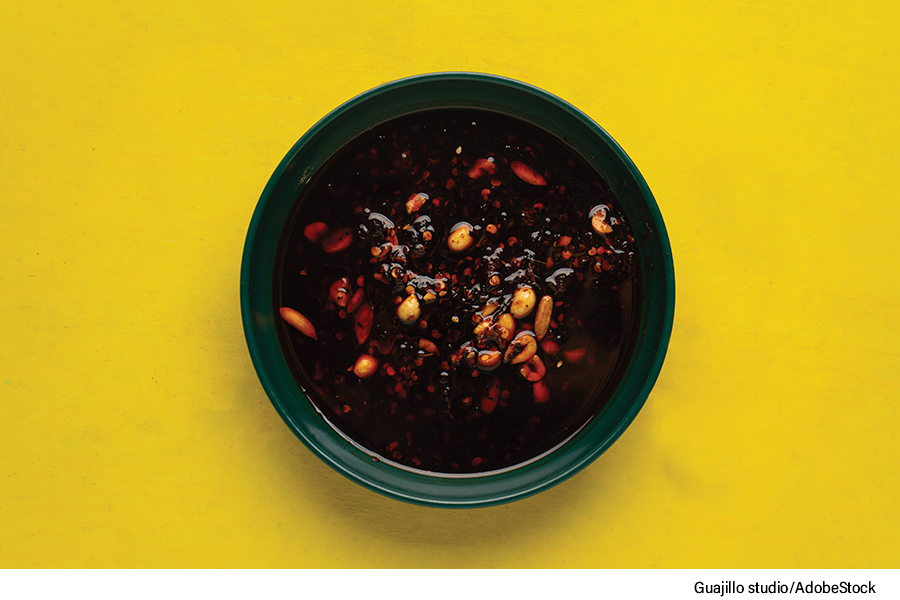Balancing Act: Flavorful Pizza Topping Combinations
“We can form a single united body, while the enemy must spit up into fractions. Hence there will be a whole pitted against the separate parts of the whole, which means we shall be many to the enemy’s few.” Sun Tzu, The Art of War, 5th Century B.C.
Making pizza is art. Each pizza is a song that starts with techniques to turn time, temperature, water, bacteria and grain into gasses, which, in turn, creates a textural wonder that is enjoyed with the allegro of toppings that play fast, quick and bright across the palate. The sensory memory that sets this pizza apart is a song that people seek out again and again, be it folded in your hand, on a piece of foil, cardboard box or porcelain plate. Pizza transforms inspiration, imagination and insight into a symphony of human creativity. Combining toppings is essential to building these perfect tastes, but to create these masterpieces, you just need to know how.
Usually, when someone asks me about pizza toppings, my pizza mind automatically goes to my makeline menu mix. I see that shiny monster and lift the lids to see the same-old 12 toppings. If you’re like me, you can’t help it — these are the backbone of my pizzeria, the most favorite pizza toppings that my customers order over and over. Our customers’ memories are all about that great experience they had before with these toppings, but these flavor memories can also be replicated in the present tense using creative and well-thought-out combinations. We all must agree that customers are becoming increasingly adventurous with their pizzas. This means that we need to be ahead of the culinary curve and know how to pair toppings in new and innovative ways.
Taste Treatment Plant
There are several ways to think about topping combinations that make for terrific pizzas. One is the flavor history of cooking and pizza, followed by the quality of toppings on hand, and lastly how these toppings interact with others and the platform that they are presented on. Here are a few questions to ask yourself before engineering a new pizza.
Taste: Is it Sweet, Salty, Bitter, Acidy/Sour or Umami/Savory?
Texture: Is it Dry, Crunchy, Soft, Gooey, Wet or Chewy?
Aroma: Is it Sweet, Smokey, Vegetal, Pungent or Wheaty?
Color: Does it have eye appeal?
Pairing: Is there a feeling of completeness? Do all the topping players embrace each other by complimenting or balancing each other?
When thinking about pairing toppings on pizza, think about the last time you’ve experienced a new combination. That taste starts with color stimulating your eye in an introduction to the whole experience followed by aroma, which consists of 80-90 percent of the flavor experience. The textural crunch of a brilliant cornicione, or crust, releases the salty wheatiness that stimulates your appetite, while the sweet umami of the cheese satisfies your need for pleasure. Perhaps the sourness, acidity or spiciness of an ancillary topping adds sparkle and brightness to the finish. You marvel as every bite combines the five elements in a symphony of taste.
Pizza Topping Pairing Blender
Many pizza makers swear by adding only 2-3 toppings to a pizza. But depending upon whether you’re adding flavor vs. enhancing flavor, this may not be enough to bring the flavors to the pinnacle of taste. Your choice of heightening flavors can take two avenues: Adding flavor or enhancing flavor.
Here are a few examples of adding flavor to a three-topping pizza to make it shine:
- Gorgonzola + Pear + Walnut (add spinach)
- Mozzarella + Basil + Tomato (add Prosciutto di Parma)
- Gruyere + Ham + Hazelnuts (add fig jam)
Here is an example of enhancing flavor to a three-topping pizza to make it shine:
- Manchego + Quince Paste + Almonds (enhance by roasting almonds)
- Caciocavallo + Ham + Red Peppers (enhance by pickling the red peppers)
- Provolone + Tomato sauce + Roasted Red Onion (Enhance by roasting onions with Calabrian chilies)
Extra Texture
The creation of pizza is in a unique position to project flavors because it has a very flavorful platform to consider while planning a flavor path. Much like pasta, you need to consider not only the texture, flavor and overall mouthfeel of the pizza but the way it is cooked. Is it caramelized, pillowy and charred, or crispy, thin and golden?
These examples provide just a peek into how pizzas may be enhanced by pizza toppings. There are many historical topping variations to look for that have been used in the past that work well on the pizza platform. They are:
- Gorgonzola, Fig Jam, Walnuts
- Artichoke, Roasted Leek, Parmigiano, Cream
- Mozzarella, Ricotta, Mortadella, Pistachio
- Anchovy, Garlic, Romano, Parsley
- Zucchini, Egg, Parmigiano
- Clam, Chili, Parsley, Romano
- Eggplant, Roasted Red Pepper, Onion
- Tomato, Garlic, Oregano
- Shrimp, Andouille Sausage, Red Onions
- Peaches, Bresaola, Burrata, Pecan
- Steak, Blue Cheese, Watercress
- Fennel, Sausage, Radicchio, Chili flakes
Pork Belly Pizza with Roasted Leeks, Pickled Lemon and Hazelnut
This pizza is amazing because of the wonderful pairing of leeks and pork which transforms like a mushroom cloud of flavor. The Gruyere adds a sour note to the melting mozzarella and the sweet lemon hit is followed by the textural crunch of the hazelnuts.
Get the Pork Belly Pizza with Roasted Leeks, Pickled Lemon and Hazelnut recipe.
John Gutekanst owns Avalanche Pizza in Athens, Ohio.









